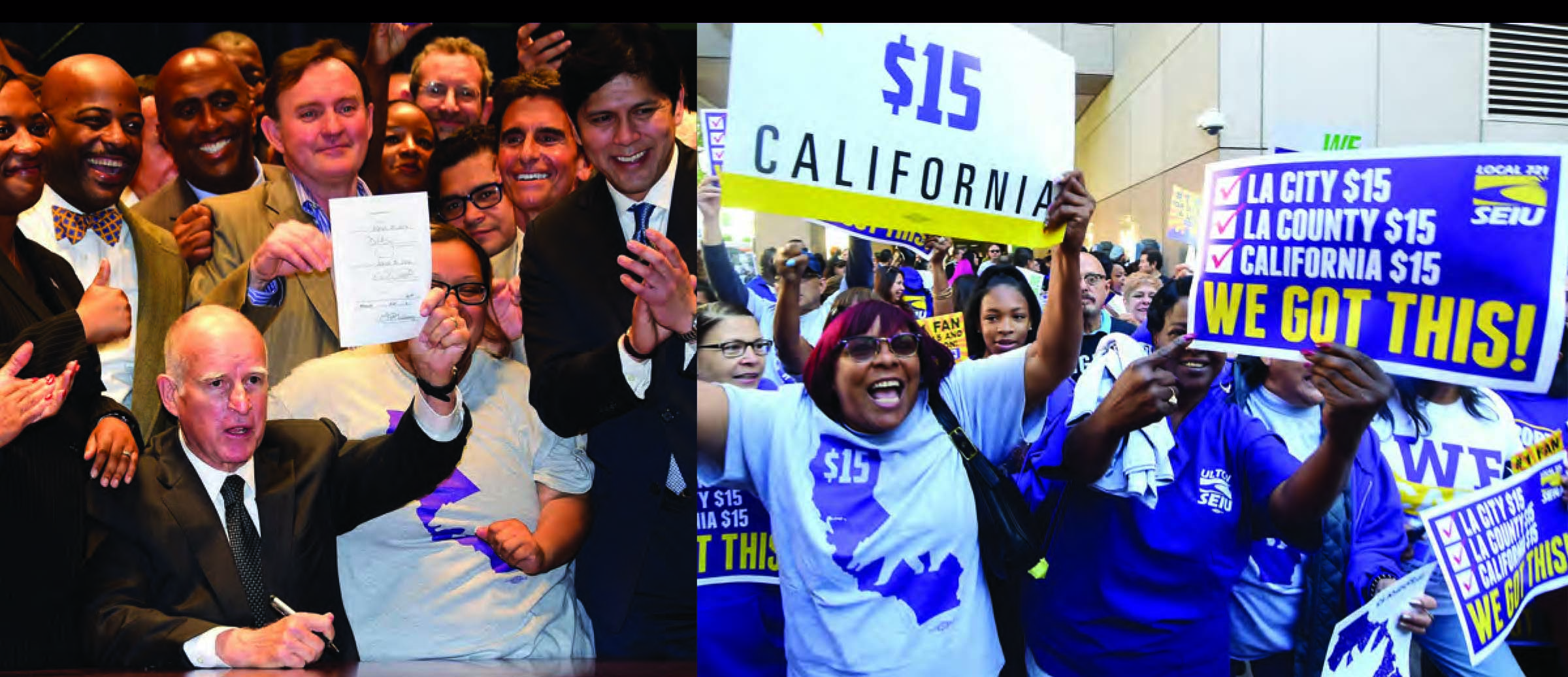
Recently, the ongoing debate about the minimum wage has heated up: In the November election, four more states voted for increases—Arizona, Colorado, Maine and Washington. Altogether, 19 states, the District of Columbia and a number of cities have increases taking effect in 2017.
The interest in a higher wage stems from the growing perception of income inequality. Regardless of the actual extent of such inequality, this is a very real political issue with very real business consequences.
The question is, are minimum wage increases the right way to tackle the issue? There are no simple answers to that question because there is no hard-and-fast conclusive evidence about the economic benefits and costs involved. However, many CEOs are not only doubtful about the real value of raising the minimum wage but they also see dangerous business consequences from its imposition. While economists argue about the data, top executives can weigh in on the debate.
In discussing the issue, CEOs can offer up several points to bring a practical perspective to what can sometimes be an emotional or purely ideological debate.
A HIGHER MINIMUM WAGE COULD MEAN FEWER JOBS. While the data on this is not clear, simple logic says that higher labor costs are likely to lead to cutbacks in hiring, increased layoffs or reductions in workers’ hours. Or, companies might turn to automation—which is becoming less expensive—to handle more entry-level work. For its part, the nonpartisan Congressional Budget Office (CBO) estimates that raising the federal minimum wage from today’s $7.25 to $10.10 would reduce employment by about 500,000 workers. Other research suggests that that figure could be much higher. And in addition to direct job losses, a higher minimum wage in one geographical area could encourage companies to move work to other locations that offer lower labor costs.
THE DOLLARS FOR INCREASED WAGES HAVE TO COME FROM SOMEWHERE. A higher minimum wage would have a real cost for businesses. In response, some companies are likely to reduce the benefits and workplace amenities that they offer to employees. Others may increase prices on products and services. According to the Cato Institute, a review of 20 studies showed that a 10% increase in minimum wages would increase food prices by up to 4%. Such price hikes could have a ripple effect on employment as higher prices lead to declining sales—and a reduced need for workers.
MINIMUM WAGE INCREASES ARE POORLY TARGETED. A significant percentage of individuals who would be affected by an increase actually come from higher-earning households. “Many low-wage workers are not members of low-income families,” notes the CBO. The office projects that with a federal minimum wage increase to $10.10, only 19% of the additional $31 billion in wages would go to families with household incomes below the poverty line, while 29% would go to families earning more than three times that level. Geographic issues also complicate matters, because the impact of minimum wage increases could vary by location. For example, while large companies in vibrant cities may be able to absorb higher wages, smaller businesses in struggling urban areas and smaller towns would find it difficult to cope.
Overall, a higher minimum wage would help some poorer families—but as a policy, it appears to be a highly inefficient way to put more money in low-earning workers’ pockets.
WILL A HIGHER MINIMUM WAGE REALLY DO MUCH GOOD? Increases may not deliver the benefits that people expect. For example, relatively few poor people actually make the minimum wage. Instead, many already earn somewhat more or don’t work at all—limiting the impact of any increase. In addition, a 2014 study by a Stanford University economist found that that minimum wage-driven increases in consumer prices, although probably small, would essentially act as a sales tax—that is, a regressive tax that tends to fall more heavily on the poor. Looking across the research to date, an “Economic Letter” from the Federal Reserve Board of San Francisco notes that, “the general conclusion from this literature is that there is no statistically significant relationship between raising the minimum wage and reducing poverty.”
WHAT’S THE RUSH? The lack of conclusive hard data on the topic is in itself a reason to act with caution. Fortunately, as the recent spate of state and local wage increases takes hold, it should provide a broad-based, real-life test of the challenges and benefits that come with a higher minimum wage—allowing a more fact-based approach to the issue. With that in mind—and with such a significant potential downside—it makes sense to wait to see how higher wages work out in practice, before rushing in with government-mandated changes.
THE MINIMUM WAGE ISSUE IS NOT LIKELY TO GO AWAY SOON. A Pew Research poll conducted last year found that 52% of Americans were in favor of a federal minimum wage of $15, a figure on the high end of the range of proposed increases. And petition drives for increase initiatives are underway in Florida, Missouri and New Jersey.
WHAT’S MORE, THE MINIMUM WAGE IS NOT ENTIRELY A CLEARLY PARTISAN ISSUE. The Republican party does oppose a federal increase, but they note that the issue should be handled at the state and local level. There is also evidence that a number of rank-and-file Republicans are sympathetic to the idea. In Arizona and Maine, for example, voters in many counties that voted for Trump also voted to pass state minimum wage increases. Thus, while a federal minimum wage hike is unlikely to come from the Trump administration, the push for wage hikes at the state and local levels is likely to continue—which means CEOs need to make their voices heard and help in the search for solutions beyond government mandates.
You might also like:
How CEOs Can Use Flexibility and Vacation in Their Talent Management Strategies
Four Steps to Better Talent Management
Building Leaders Who Build the Future: Aligning Talent Strategies with Business Goals
How Mid-Market Companies can Improve their Talent Planning Strategies


0

1:00 - 5:00 pm
Over 70% of Executives Surveyed Agree: Many Strategic Planning Efforts Lack Systematic Approach Tips for Enhancing Your Strategic Planning Process
Executives expressed frustration with their current strategic planning process. Issues include:
Steve Rutan and Denise Harrison have put together an afternoon workshop that will provide the tools you need to address these concerns. They have worked with hundreds of executives to develop a systematic approach that will enable your team to make better decisions during strategic planning. Steve and Denise will walk you through exercises for prioritizing your lists and steps that will reset and reinvigorate your process. This will be a hands-on workshop that will enable you to think about your business as you use the tools that are being presented. If you are ready for a Strategic Planning tune-up, select this workshop in your registration form. The additional fee of $695 will be added to your total.

2:00 - 5:00 pm
Female leaders face the same issues all leaders do, but they often face additional challenges too. In this peer session, we will facilitate a discussion of best practices and how to overcome common barriers to help women leaders be more effective within and outside their organizations.
Limited space available.

10:30 - 5:00 pm
General’s Retreat at Hermitage Golf Course
Sponsored by UBS
General’s Retreat, built in 1986 with architect Gary Roger Baird, has been voted the “Best Golf Course in Nashville” and is a “must play” when visiting the Nashville, Tennessee area. With the beautiful setting along the Cumberland River, golfers of all capabilities will thoroughly enjoy the golf, scenery and hospitality.
The golf outing fee includes transportation to and from the hotel, greens/cart fees, use of practice facilities, and boxed lunch. The bus will leave the hotel at 10:30 am for a noon shotgun start and return to the hotel after the cocktail reception following the completion of the round.